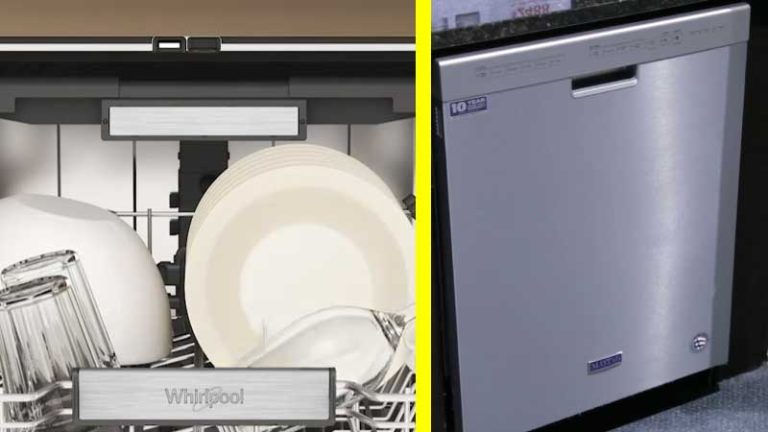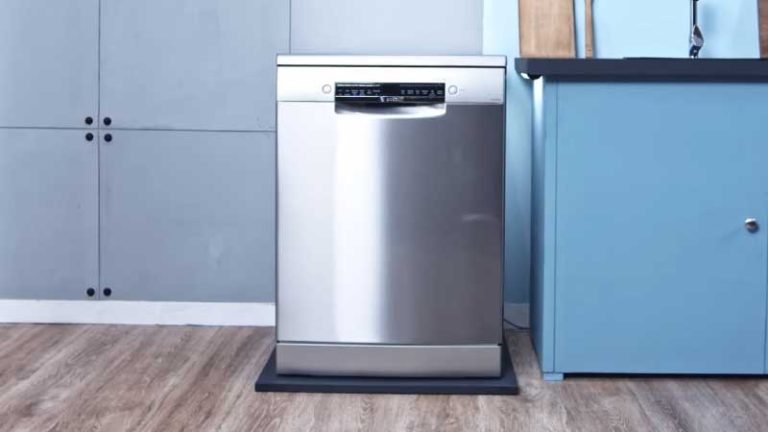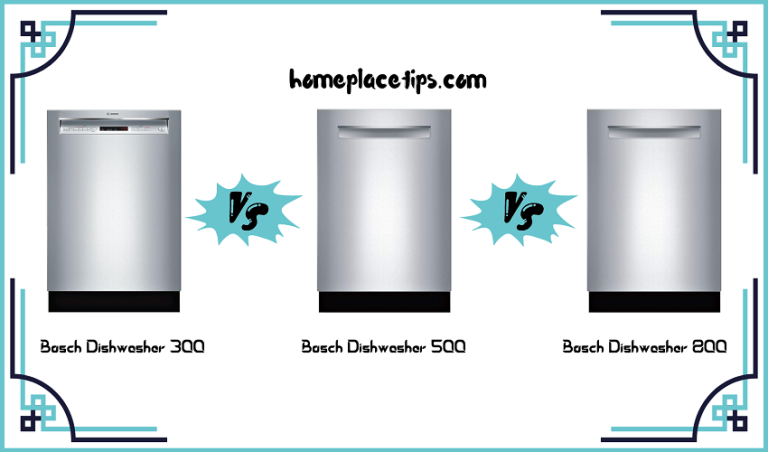Whirlpool Dishwasher Start Button Not Working [Explained!]
If the start button on your Whirlpool dishwasher is not working, there are a few troubleshooting steps you can take. First, ensure that the door is fully closed and latched securely, as many dishwashers won’t start unless the door is properly sealed. Confirm that there is power by checking the electrical connection and verifying that the circuit breaker is functioning correctly.
Additionally, check for any control lock features on the dishwasher and disable them if necessary. If the issue persists, consult the user manual for model-specific instructions or contact Whirlpool customer support for further assistance. In some cases, professional service may be required to address underlying technical issues with the start button.
1. There’s No Power Getting to the Unit
If there’s no power getting to your dishwasher unit, and it fails to turn on, follow these steps to troubleshoot and potentially resolve the issue:
- Check Power Source: Ensure that the dishwasher is properly plugged into a functioning electrical outlet. Verify the power cord for any visible damage.
- Circuit Breaker Inspection: Inspect the circuit breaker in your home’s electrical panel. If the breaker is tripped, reset it by turning it off and then on. A tripped breaker can interrupt power to the dishwasher.
- Power Outlet Test: Plug another appliance into the same outlet to confirm that the outlet itself is functioning correctly. If the outlet is faulty, it may need to be repaired or replaced.
- GFCI Outlet Reset: If your dishwasher is connected to a Ground Fault Circuit Interrupter (GFCI) outlet, check if it has tripped. Reset the GFCI outlet, which is typically located in the kitchen or near water sources.
- Door Latch Check: Ensure that the dishwasher door is securely closed and latched. Some models won’t start unless the door is properly sealed.
2. You Failed to Close the Door Properly
If you’re experiencing issues with your dishwasher because the door was not closed properly, follow these steps to troubleshoot and solve the problem:
- Door Inspection: Open the dishwasher door and carefully examine the door and its components. Look for any visible obstructions, debris, or foreign objects that might prevent the door from closing securely.
- Door Alignment: Ensure that the door is properly aligned with the dishwasher frame. If misaligned, gently adjust the door to fit squarely within the frame.
- Latch Check: Inspect the door latch mechanism to make sure it is functioning correctly. Clean the latch area of any debris that may be obstructing its operation.
- Door Gasket Inspection: Examine the door gasket for any signs of wear or damage. The gasket should create a tight seal when the door is closed. If necessary, clean or replace the gasket.
- Dish Loading: Avoid overloading the dishwasher or placing large items near the door that could interfere with proper closure. Ensure that dishes are arranged in a way that doesn’t obstruct the door’s movement.

3. You May Be Having a Problem With a Stuck Key
If you’re encountering issues with a stuck key on your dishwasher control panel, follow these steps to troubleshoot and resolve the problem:
- Inspect Control Panel: Carefully examine the control panel for any visible signs of damage or debris around the keys. Clean the control panel with a soft, dry cloth to ensure no foreign substances are affecting the keys.
- Control Lock Feature: Check if your dishwasher has a control lock feature. If activated, it can prevent the keys from responding. Refer to the user manual for instructions on how to disable the control lock.
- Key Testing: Press each key on the control panel to identify if any specific key is physically stuck or unresponsive. If a key seems jammed, gently try to release it. Avoid using excessive force.
- Power Cycle: Turn off the dishwasher by unplugging it or using the circuit breaker. Leave it powered off for a few minutes to perform a reset. Power it back on and check if the key responsiveness improves.

4. There’s a Problem with Water Supply
If you’re facing issues related to the water supply in your dishwasher, follow these steps to troubleshoot and potentially solve the problem:
Check Water Inlet Valve: Inspect the water inlet valve to ensure it is fully open and not clogged. The water inlet valve is typically located behind the lower kickplate on the front of the dishwasher.
Inspect Inlet Hose: Examine the dishwasher’s inlet hose for kinks, twists, or any signs of damage. Ensure the hose is properly connected to both the dishwasher and the water supply.
Clear Obstructions: Check the inlet valve screen for any debris or sediment. Clean or remove any obstructions that may be affecting water flow.
Water Pressure Check: Verify that there is adequate water pressure coming into the dishwasher. Low water pressure can impact the dishwasher’s ability to fill.
Inlet Hose Positioning: Ensure that the inlet hose is not positioned in a way that restricts water flow. It should be free from being pinched or bent.
Run Hot Water: Before starting a dishwasher cycle, run hot water at the kitchen sink until it is hot. This ensures that the dishwasher begins the cycle with hot water for effective cleaning.

5. The Dishwasher Just Jammed and Needs a Reset
If your dishwasher is jammed and requires a reset, follow these steps to troubleshoot and resolve the issue:
- Power Off the Dishwasher: Turn off the dishwasher by unplugging it from the electrical outlet or using the circuit breaker. Ensure that it is completely powered down.
- Wait for a Few Minutes: Allow the dishwasher to remain off for about 5-10 minutes. This waiting period allows the internal electronics to reset.
- Check for Obstructions: Open the dishwasher door and inspect the interior for any obstructions, such as dishes or utensils that may be jamming the spray arms or preventing the door from closing properly. Remove any items causing the jam.
- Close and Seal the Door: Ensure that the dishwasher door is securely closed and latched. Many dishwashers won’t operate if the door is not properly sealed.
- Power On the Dishwasher: Plug the dishwasher back in or turn on the circuit breaker to restore power.
- Select a New Cycle: Once power is restored, select a new wash cycle on the control panel and attempt to start the dishwasher.
- Check for Error Codes: Monitor the control panel for any error codes or indicators that may provide insights into the nature of the jam or reset.

6. The Washer’s Thermal Fuse May Have Blown
If you suspect that the washer’s thermal fuse may have blown, follow these steps to troubleshoot and potentially resolve the issue:
Power Off the Dishwasher: Turn off the dishwasher by unplugging it from the electrical outlet or using the circuit breaker. Ensure that it is completely powered down.
Access the Thermal Fuse: The thermal fuse is typically located on or near the control board. Refer to the user manual for your specific dishwasher model to identify the location of the thermal fuse.
- Check for Visible Damage: Inspect the thermal fuse for any visible signs of damage, such as a melted appearance or a broken connection. A blown thermal fuse will often show physical evidence.
- Test the Thermal Fuse: Using a multimeter set to the continuity or ohms setting, test the thermal fuse for continuity. If there is no continuity, the fuse has blown and needs to be replaced.
- Replace the Thermal Fuse: If the thermal fuse is confirmed to be blown, replace it with a new one. Ensure that you use a thermal fuse with the same specifications as the original.
- Address the Root Cause: Determine and address the root cause of the blown thermal fuse. Overheating can result from issues such as a malfunctioning heating element or problems with the control board. These underlying issues need to be resolved to prevent future fuse failures.
- Power On and Test: Once the thermal fuse is replaced and the root cause is addressed, plug in the dishwasher or turn on the circuit breaker. Test the dishwasher to see if it operates without any further issues.
7. Your Whirlpool Dishwasher Has Too Much Dirt Build Up
If your Whirlpool dishwasher has accumulated too much dirt build-up, follow these steps to address and solve the issue:
- Empty the Dishwasher: Remove all dishes, utensils, and any debris from the dishwasher.
- Clean Interior Surfaces: Wipe down the interior surfaces of the dishwasher, including the walls, racks, and base, using a damp cloth or sponge. Pay attention to corners and crevices where dirt may accumulate.
- Remove and Clean Filters: Dishwashers often have filters or screens to trap debris. Refer to the user manual to locate and remove these filters. Clean them thoroughly under running water to remove any accumulated dirt.
- Inspect Spray Arms: Check the spray arms for clogs or debris. Remove any obstructions to ensure proper water circulation during the wash cycle.
- Run a Cleaning Cycle: Some dishwashers have a self-cleaning or maintenance cycle. Refer to the user manual for your specific model and run a cleaning cycle if available.
- Use Dishwasher Cleaner: Consider using a dishwasher cleaner or descaler. Follow the manufacturer’s instructions for the appropriate use of the cleaner to remove mineral deposits and dirt.
- Regular Maintenance: Establish a routine for regular dishwasher maintenance. This may include cleaning filters, wiping down surfaces, and running maintenance cycles as recommended in the user manual.
- Adjust Detergent Amount: Ensure that you are using the correct amount and type of dishwasher detergent. Using too much detergent can contribute to dirt build-up.
Frequently Asked Questions
Q: Why is the start button on my Whirlpool dishwasher not working?
A: The start button on your Whirlpool dishwasher may fail to work due to various reasons. It could be related to issues with the door latch, a malfunction in the control panel, or electrical problems.
Q: How can I troubleshoot the start button issue?
A: Start by ensuring that the dishwasher door is fully closed and latched securely. If the door is not properly closed, the dishwasher may not start. Check for any visible damage or debris around the start button and the control panel. Additionally, verify that there is power reaching the dishwasher by checking the power supply and the circuit breaker.
Q: What should I do if the door is closed, and the power supply is fine, but the start button still won’t work?
A: If the basic checks don’t resolve the issue, try performing a reset. Turn off the dishwasher by unplugging it or using the circuit breaker, wait for a few minutes, and then power it back on. If the problem persists, consult the user manual for your specific model for additional troubleshooting steps.
Q: Could a control lock feature be affecting the start button?
A: Yes, some Whirlpool dishwashers have a control lock feature that can prevent buttons from responding. Check if the control lock is engaged and follow the instructions in the user manual to disable it.
Q: When should I seek professional assistance for a non-working start button?
A: If you have gone through the troubleshooting steps, including checking the door, power supply, and control lock, and the start button still doesn’t work, it may indicate an underlying technical issue. In such cases, it is advisable to contact Whirlpool customer support or seek assistance from a qualified technician for further diagnosis and repair.
As an Amazon Associate I earn from qualifying purchases.
- Can You Put Clouds Shoes in the Washing Machine? With Tips & Tricks - April 10, 2024
- European Washing Machine vs American – History, Design, Technology - March 27, 2024
- Can You Put Boxing Gloves In The Washing Machine? – Expert Tips - March 25, 2024



![Whirlpool Dishwasher Diagnostic Mode [Need To Know!]](https://homeplacetips.com/wp-content/uploads/2023/12/Whirlpool-Dishwasher-Overview-Model-WDT730HAMZ_000013962-768x432.webp)



